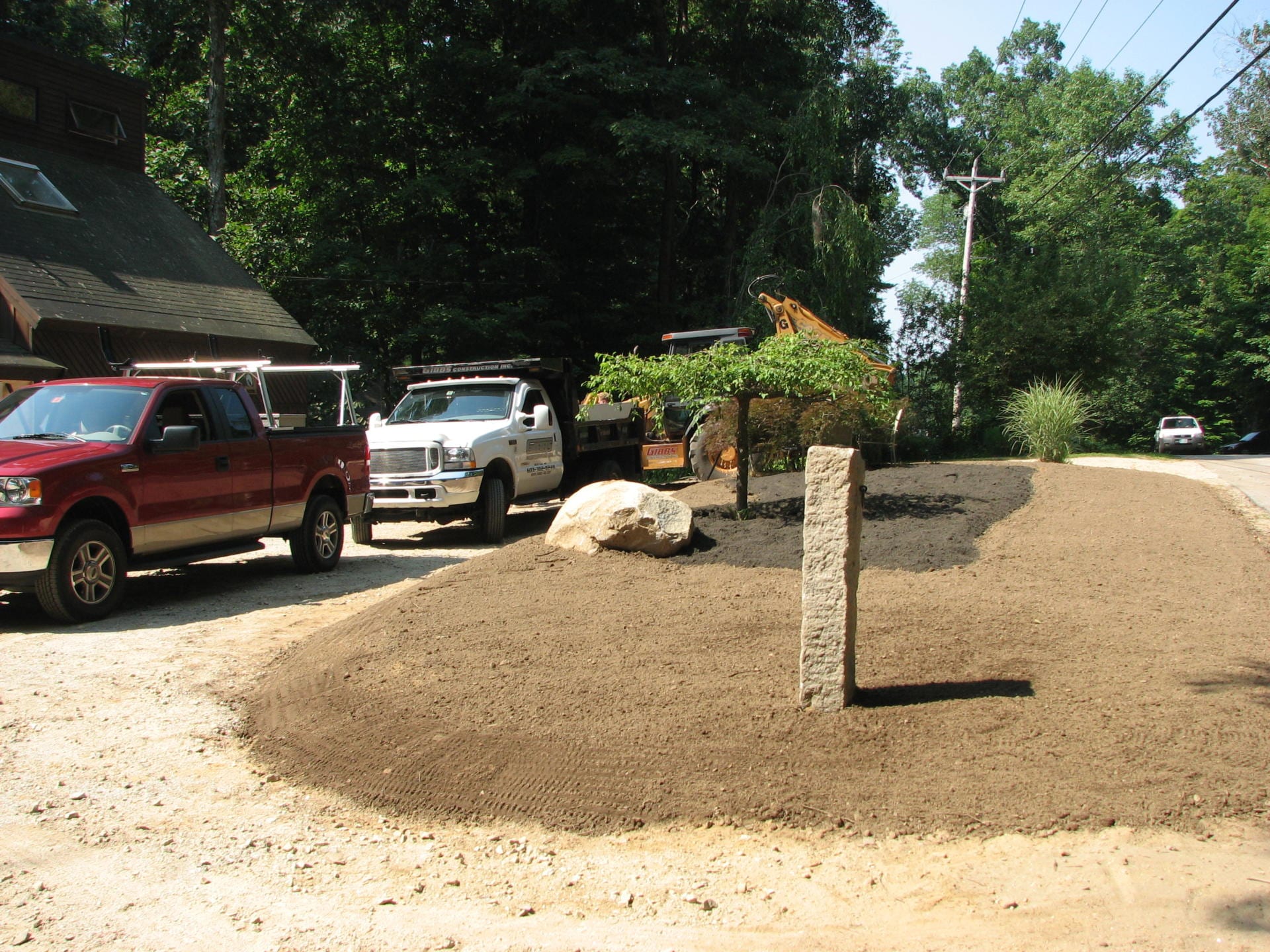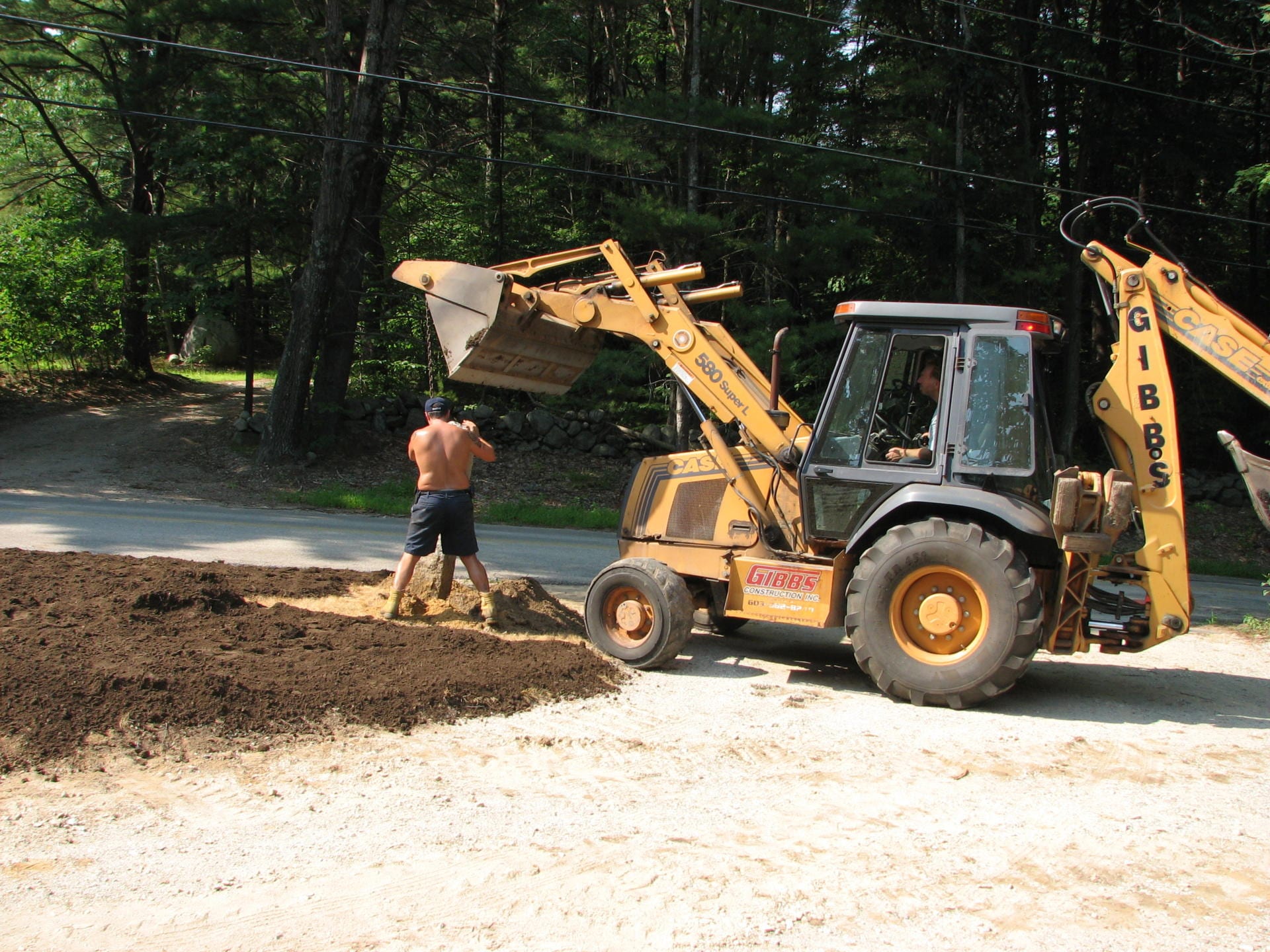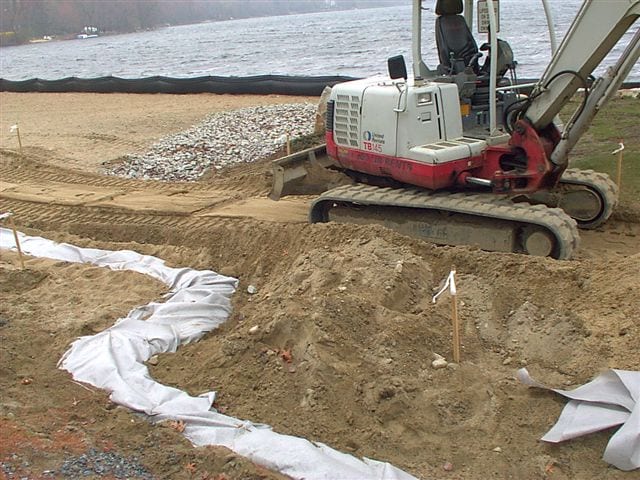Managing a project with multiple phases and many subcontracts can present scheduling challenges. We asked three ELA members to share their insights into how they screen subcontracts and successfully manage projects with many players and many moving parts.
Contributors
Lauri Johnson, Owner, Lauri Johnson Landscape Design, Reading, MA
Nanette Masi, President, Back to Nature, Amesbury, MA
Trevor Smith, Lead Designer, Land Escapes Design Inc, Arlington, MA

Finding the right subcontractor for a job requires careful consideration of your own working style and of the job requirements.
What are the top questions you ask when you are selecting a subcontractor?
Lauri:
- My initial screening process for a potential subcontractor involves a personality assessment: How do I feel about the way they act or communicate? Do they come across as professional, knowledgeable, competent, polite, considerate? Do I feel as though I can communicate well with him/her/them?
- I also want to see work the subcontractor has done and talk to folks who have hired them, checking references.
- I need to know that they have proper credentials, experience, equipment, AND appropriate liability and workers comp insurance.
- It is also important for me to talk about their scheduling practices. How available are they? If they are booked up too far ahead, it is unlikely I will be able to use them unless the project can wait.
Nanette:
-
- Do you enjoy collaborating during installations as new ideas crop up?
- Are you willing to take direction from a female contractor? (forced to fire a company due to this issue)
- How far will you go to ensure the client is satisfied with the work?
- Are you comfortable directing all client communications through me?
- Can you agree that no changes to the design or specifications will be made without my express permission?
- Are you trained, certified, and dedicated to the use of ecologically sound techniques and materials?

Trevor: For heavy machinery professionals I ask the following questions:
- Have you ever worked on sensitive/ecological work sites before?
- Do you take precautions to minimize compaction, or is that something we need to be responsible for?
- Do you take precautions to protect the Critical Root Zone (CRZ)? Will you mark them, or should we? If the contractor doesn’t know what this is, they are out.
- I work for very particular clients, and the work we do can be very precise. For example, I may need to move a boulder 6 inches or rotate it 10 degrees. Is that going to drive you crazy?
- Are you fully insured?
What do you see as potential “red flags” when you are interviewing subcontractors?
Lauri: The ability to communicate is extremely important for me. If I feel that the subcontractor lacks this ability, I will not pursue them. Additionally, all the requirements and characteristics mentioned above in my four top questions are important to me. If any are lacking, those will be red flags.
Nanette: Four behaviors set off red flags for me: 1) a know-it-all attitude that may preclude collaboration and a comfortable working atmosphere, 2) unwillingness to commit to completing a project without interruption once begun (aside from extenuating circumstances), 3) uninsured, and 4) unwilling to provide contacts for previous clients.
Trevor: As mentioned above, they must know what the CRZ is. In addition, if they seem like they aren’t going to be collaborative or patient, then I know we are not a fit.
Do you use any tools (checklists, apps, etc.) that help keep lines of communication open between everyone working on a project?
Lauri: I use phone calls, texting, and emailing…and keep good notes on paper in the client file.
Nanette: I use a very detailed contract. Prior to the project start date, I include lists of agreed-upon tasks for each stage. During construction, I share a daily summary of work accomplished and any discussions/agreements with both the contractor and the client so we’re all on the same page. A well-documented record of accomplished tasks, additional requests, and construction issues helps avoid or clear up any potential misunderstandings.
Trevor: I am careful to keep a complete email thread of all communication. Any phone conversation gets reiterated in a follow-up email, so that there is always a record of the process. In addition, contacts and change orders are required so that everyone knows exactly who does what and what it is going to cost.
Do you ever fill the role of subcontractor? If so, what steps do you take before the project begins, during work, and at project completion to make sure everyone is satisfied with the job?
Lauri: Yes, I have acted as a subcontractor for landscapers who need my specialized services. Before projects begin, I take a lot of care to be sure that objectives and expectations are clearly defined and understood between both parties. I also check in regularly throughout the process of working together.
Nanette: When I work directly for a client, I adhere to the following guidelines:
- Provide a detailed estimate/proposal for contracted work.
- Send regular emails/calls to notify when site work will take place or may be delayed, any potential changes due to site issues, and end-of-the-day check-ins with a review of work that has been done.
- Request that clients confirm approval before implementing major design steps (example: seeking a thumbs up from the client after a walkway is marked out before digging it out and installing). I try to ensure that the client feels like an integral part of the project. It’s so much better to make changes before the work has progressed rather than to fix things later.
- At completion, I do a thorough walk-through with the client, noting any issues that may need to be addressed and addressing those immediately before the client signs off.
Trevor: We often work as subcontractors. In this role, we are careful to act in the ways we want our subcontractors to act, and we make executing the designer’s vision our top priority. We spell everything out in a contract so that both parties know what to expect. During the process, communication is key. We check in often, and we ask whenever there is a question, rather than making a guess. Upon completion, we do a final walk-through to make any final adjustments (if any) and have the designer sign off on our work.
***
Each author appearing herein retains original copyright. Right to reproduce or disseminate all material herein, including to Columbia University Library’s CAUSEWAY Project, is otherwise reserved by ELA. Please contact ELA for permission to reprint.
Mention of products is not intended to constitute endorsement. Opinions expressed in this newsletter article do not necessarily represent those of ELA’s directors, staff, or members.




